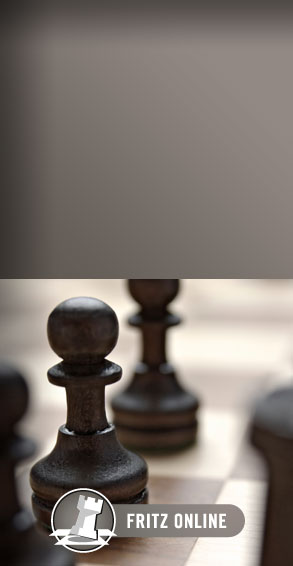|
Incredible Abundance
ChessBase Magazine 129 reviewed by Mark Donlan (chesscafe.com)
 ChessBase
Magazine is published six times per year and has now reached its 129th
issue, yet it may be one of the most underutilized resources available to
chess players. I dare say that even subscribers may not take full advantage
of it. But this is not due to any deficiency with regard to the product. It
is because there is simply such an incredible abundance of material, so much
in fact that each issue of ChessBase Magazine
comes with a twenty-two page printed booklet that serves as a table of
contents to the DVD. ChessBase
Magazine is published six times per year and has now reached its 129th
issue, yet it may be one of the most underutilized resources available to
chess players. I dare say that even subscribers may not take full advantage
of it. But this is not due to any deficiency with regard to the product. It
is because there is simply such an incredible abundance of material, so much
in fact that each issue of ChessBase Magazine
comes with a twenty-two page printed booklet that serves as a table of
contents to the DVD.
The main stories in this issue are the
tournaments at Wijk aan Zee and Linares and the Topalov-Kamsky match.
Highlights include analysis from Karjakin, Carlsen, Radjabov, and van Wely,
with extensive video annotations by Shirov on two of his games from the
Bundesliga. Furthermore, there are eleven opening surveys, as well as two
short repertoire suggestions in video format.

The material is divided as follows:
- World Chess Challenge Sofia 2009
- Wijk aan Zee 2009
- Tournaments129
- Linares 2009
- D45 Semi-Slav 7.g4
- D15 Slav Defence 4...a6 5.a4
- D07 Chigorin Defence II
- D00 Blackmar-Diemer-Gambit
- C93 Ruy Lopez Smyslov Variation 9...h6
- C18 French Defence Winawer 7.Qg4 Qc7
- C03 French Defence 3.Nd2 Be7
- B20 Sicilian Anti-Najdorf 2.Ne2 d6 3.g3
- B08 Pirc Defence Classical Variation
- B01 Scandinavian Defence 3.Nc3 Qe5+
- A87 Dutch Leningrad 7...Qe8
- 129 Start!
- 129 Opening Trap
- 129 Move by Move
- 129 Strategy
- 129 Tactics
- 129 Endgame
- 129 Fritztrainer
- 129 Telechess
- 129 New Products
After browsing the booklet, the place to
begin is “129Start!.” If you have ChessBase 9 or 10, you will have to
double-click the icon in the database browser. Otherwise, you are taken here
immediately by the ChessBase Reader that comes bundled on the DVD. Here you
will find links to all the contents as well as three introductory videos,
one by GM Karsten Müller and two by GM Dorian Rogozenco.

GM Müller takes a little more than twelve
minutes to introduce some of the highlights of the DVD. He informs us as to
the number of annotated games from Wijk aan Zee and Linares, and looks
briefly at the game Karjakin-Morozevich. Regarding the openings, he
highlights videos by Lubomir Ftacnik on the Blackmar Diemer Gambit, and
briefly examines the correspondence game Tinture-Masquelier, where “White’s
initiative is not too easy to deal with.” He also shows the game
Simon-Herbold from the video on a surprise weapon against the Sveshnikov by
Oliver Ree and Pascal Simon, where White sacrifices a piece for three pawns,
which can be quite dangerous over-the-board. The next survey he looks at is
by Leonid Kritz on the Scandinavian with 3...Qe5+, noting that if you play
this move, “your opponent will most likely underestimate you.” Following
this he previews Alexander Kuzmin’s survey on the anti-Najdorf system in the
Sicilian with 2.Ne2 and Martin Breutigam’s new pawn sacrifice against the
Leningrad Dutch. Müller concludes with a mention of the columns “Move by
Move” by Daniel King, “Tactics” by Oliver Reeh, and “The Opening Trap” by
Rainer Knaak.
GM Rogozenco’s first video is devoted to an
overview of Wijk aan Zee and Linares. He takes slightly more than sixteen
minutes to examine the games Karjakin-Adams, Carlsen-Karjakin, Wang
Yue-Radjabov, Caruana-Short, Grischuk-Aronian, and Ivanchuk-Anand. Keep in
mind that many of these games are also annotated by the players themselves,
often in video format.

In his second video, clocking at more than
nineteen minutes, Rogozenco reviews the Topalov-Kamsky match, in which
Topalov won the right to challenge Anand for the world championship. He
examines Topalov’s victories in Games Two, Five, and Seven, and indicates
that Kamsky’s poor handling of the clock led him to make losing mistakes.
Rogozenco then presents the games Svidler-Stefanova, Bacrot-Lysyj, and
Braun-Fridman from Open tournaments in Gibraltar and Moscow as well as from
the German Individual Championship.
In “The Opening Trap” Rainer Knaak presents
a line from the English Defense 1.d4 b6 2.c4 Bb7 3.Nc3
e6 4.e4 Bb4 5.Bd3 f5 6.d5 fxe4 7.Bxe4 Qh4 8.Qd4, as played in
Relange-Shirazi, and challenges readers to find the winning line for Black:

The game continued
8...Nf6! 9.Bf4 Nxe4 10.Qxe4 0–0 11.Nge2
exd5 12.cxd5 Bxc3+ 13.bxc3 Na6 14.g3 Qh5 15.c4 Rae8 16.Qc2 Qf3 17.Rf1 Nb4
18.Qd2 Nd3+ 19.Kd1 Nxf4 20.gxf4 Rxf4 0–1
In Daniel King’s “Move by Move” column
nearly all White’s moves are accompanied by training questions, with
feedback given for the game moves as well as plausible continuations. Thus,
as you play through the game, Berczes-Wells, 4NCL 2008, you will be
challenged to input White’s next move. It is no easy feat to replicate the
moves of a 2500 player, but it is a good training exercise. The game is also
given without the training questions with all the commentary included in the
analysis.
Peter Wells’s “Strategy” column has been a
long-time feature of ChessBase Magazine. In this
issue his focus is on weak squares, a subject he considers so fundamental
that it would be negligent not to return to it from time to time.

In his first example, Bareev-Rivas, we see
White taking the surprising decision to undouble Black’s isolated b-pawns in
order to then take advantage of the host of newly created weak squares by
15.Bxc5! bxc5. Wells writes “after this
transformation we should additionally be alerted to d6, b6 and the pawn c5
itself. Perhaps the latter is the most instructive. Sometimes it helps to
see a weak pawn as just a weak square with a pawn on it! On b6 the pawn
provides decent control of c5. Once it is on c5, there is no more cover for
this square since White is in time to ensure that the further move …b6 would
involve unacceptable tactical costs” and that “the change in status of c5
from protected square to vulnerable point is particularly costly to Black.”
He further states “that some squares may not be formal
weaknesses in the sense that there exists the theoretical possibility of
pawn cover, but still de facto weak since
the costs of providing such pawn cover are simply too high.” He goes on to
give another six examples of the theme, with a second part to follow in
CBM #130.
In “Tactics,” Oliver Reeh presents his
favorite combinations from CBM #129, this time
focusing on positions that include knight forks. He includes twenty-seven
games that contain seventy-five training questions, with the position from
Nielsen-Izoria receiving special attention by being offered in video format.

Reeh takes thirteen minutes to demonstrate
the amazing tactical complications for both sides that ensued after
40…Ne4 41.Ne3 Rf2+ 42.Kg1 Rxh2 43.Nxd5
Rh1+ 44.Kg2 Rxa1 45.Bh4 Qe6 46.Ne7+ Kf7 47.d5 Qe5 48.d6 Nxd6 49.Qf3+ Ke6
50.Qg4+ Kf7 51.Qf3+ Ke6 52.Qg4+ Kf7 ½–½
Moreover, the first six examples from
“Tactics” are printed in the accompanying booklet. You can download this
page as a
PDF file, but be warned, you’ll have to get the DVD for the answers.
Six puzzles from Karsten Müller’s endgame
column are also presented in the printed booklet. The column itself features
eight video clips with a total running time of thirty-four minutes that
focuses on passed pawns. There is also a second topic on same-color bishop
endgames in which Müller notes that “even endgames with bishops of the same
color have a pretty high drawing tendency.” He provides a six-minute
introductory video and examines six games on this theme, with many of them
offering training questions for the reader to solve.
The “Fritztrainer” section includes five
videos. Here you can find the video on the surprise weapon against the
Sveshnikov that was mentioned above, as well as a presentation from Dorian
Rogozenco on a transposition trick to reach the Sveshnikov, while Lubomir
Ftacnik discusses his investigations of the Blackmar Diemer Gambit, and
Andrew Martin has videos on the Czech Benoni and Alekhine Defense.
“Telechess” is written by GMs Juan
Sebastián Morgado and Roberto Alvarez. It presents reports and well
annotated games from postal or email tournaments around the world. This
issue features 8,025 games, thirty-three of which are annotated.
“New Products” is rather self-explanatory.
Here you can view previews of new software that is about to be released by
ChessBase. The featured products are as follows:
- ChessBase Opening Encyclopedia
2009, which incidentally is where all the
opening surveys from ChessBase Magazine are
published
- Fritz & Fertig 4,
which is known in the U.S. as Fritz & Chesster
- Fritz & Chesster
for the Nintendo DS game system
- Power Play 10: Calculation
by Daniel King, which includes a ten-minute video excerpt
- The Closed Sicilian
by GM Nigel Davies, which includes a fourteen-minute video excerpt
- How to Beat Younger Players
by GM Nigel Davies, which includes a nearly twelve-minute video excerpt
As you can see, the contents of
ChessBase Magazine can keep one occupied for
hours on end or at least until the next issue comes out. Players at all
levels can benefit from the training material and opening surveys. In all
there are 933 games from the period January through March 2009, about eighty
of which are annotated. This does not include the 8,025 games in the
“Telechess” section of course. The list of contributors reads like a who’s
who of top players and theorists, with names such as Carlsen, Caruana, Giri,
Karjakin, Krasenkow, Marin, Radjabov, Stohl, and Tiviakov to name just a
few. Once you try one issue of ChessBase Magazine,
you will want to sign up for a subscription so as not to miss another.
|


















 ChessBase
Magazine is published six times per year and has now reached its 129th
issue, yet it may be one of the most underutilized resources available to
chess players. I dare say that even subscribers may not take full advantage
of it. But this is not due to any deficiency with regard to the product. It
is because there is simply such an incredible abundance of material, so much
in fact that each issue of
ChessBase
Magazine is published six times per year and has now reached its 129th
issue, yet it may be one of the most underutilized resources available to
chess players. I dare say that even subscribers may not take full advantage
of it. But this is not due to any deficiency with regard to the product. It
is because there is simply such an incredible abundance of material, so much
in fact that each issue of 




